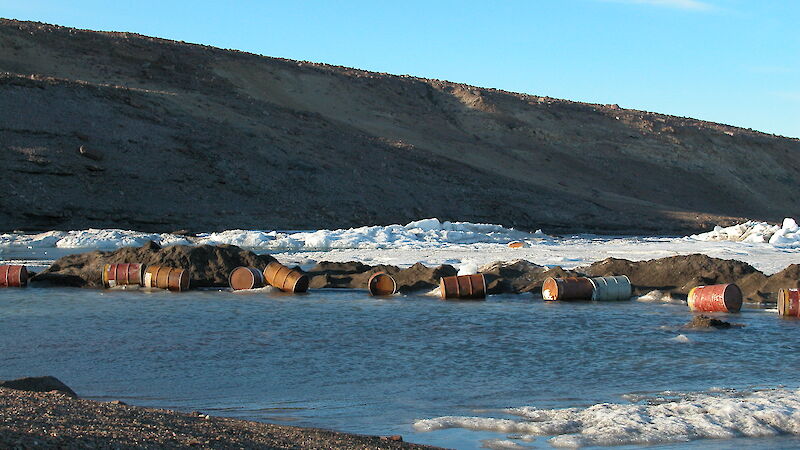Pollution is one of the most visible effects of human occupation across the planet. From the most remote deserts to the busiest cities — vehicle exhaust emissions, sewage, household refuse and chemicals pollute the environment.
Antarctica is one of the cleanest places on Earth. This makes it an ideal location to measure the spread of global pollutants. It is also one of the first places where the effects of increased atmospheric carbon dioxide are seen. Because of this, Antarctica has a central role in global climate change research.
Minute traces of manufactured chemicals from other parts of the world are now being detected in the snow that falls over Antarctica. Some of these chemicals can become concentrated in the bodies of animals, such as seals, penguins and whales. The chemicals can be harmful to these animals in the long-term.
Minimising impacts
It is not possible for people to visit without leaving some evidence of their presence — no matter how careful they are. The construction and operation of over 50 Antarctic stations has made an obvious, although localised, impact on the environment.
To deal with the problems associated with our impact on the Antarctic environment, Australia established a multi-disciplinary research program. The program focuses specifically on understanding and minimising the effects of our presence in Antarctica.
The AAD takes special precautions to minimise the impacts of our presence in Antarctica. Stringent environmental guidelines apply to all operations on land and at sea.
Expeditioners receive environmental training and are mindful of the effects that each of their activities can have on the environment.
Each proposed activity in Antarctica undergoes a rigorous environmental impact assessment before it is approved. This process of environmental assessment accounts for and minimises any potential impacts the activity may have on the environment.
Remediation
Australia has inherited problems that result from the way we used to build and operate our stations. This is the case for many countries operating in Antarctica.
Remediation of contaminated sites — usually former work areas and tips — is a major research focus of the AAD environmental program.

